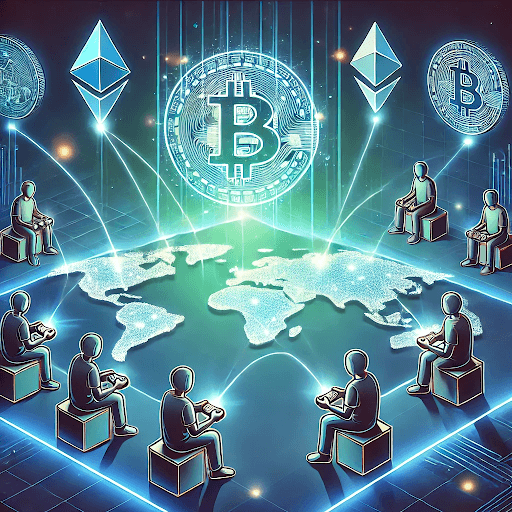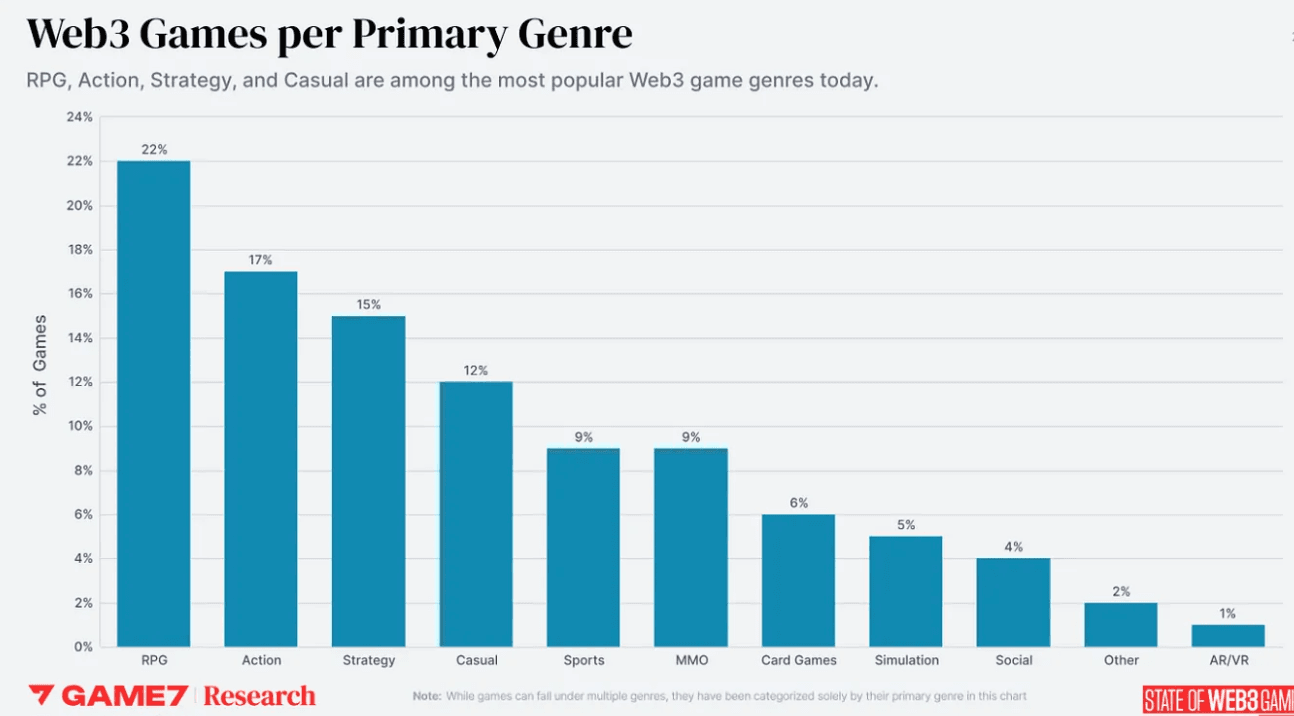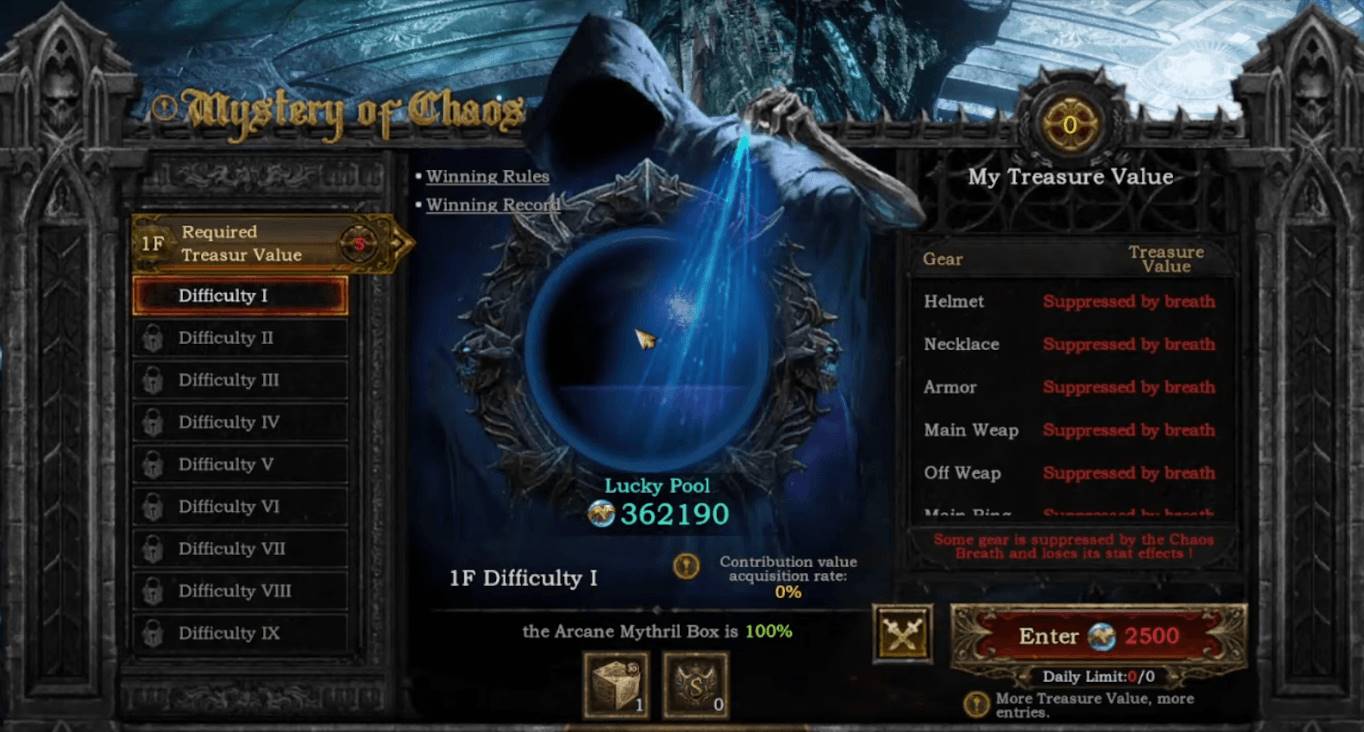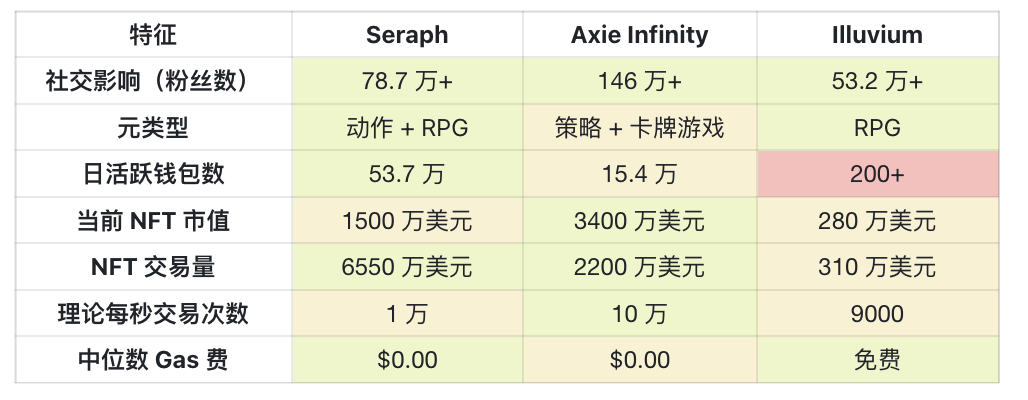The blockchain gaming market is experiencing rapid growth, with the market size expected to reach $301.5 billion by 2030.
Author: Slice Analytics
Translation: Deep Tide TechFlow

"Games are a way of communication and a bridge that connects people. It's like a thread that tightly binds people together." — Hideo Kojima - Creator of "Metal Gear Solid".
Introduction
The blockchain gaming market is witnessing rapid growth, with an expected compound annual growth rate of about 68% from 2024 to 2030, and the market size potentially reaching $301.5 billion by 2030. This growth is attributed to the decentralized nature of blockchain, where players can truly own in-game assets such as NFTs and Tokens. This ownership distinguishes GameFi from traditional gaming ecosystems, providing players with a unique combination of entertainment and financial incentives that traditional platforms cannot match.
While all types of GameFi are expected to thrive in the next decade, role-playing games (RPGs) are particularly well-suited to benefit from the decentralized model of GameFi, as they emphasize character development, immersive worlds, and in-game economies. In traditional RPGs, players spend significant time developing characters, acquiring rare items, and exploring complex storylines, but the value of these achievements is often locked within the game's ecosystem. In GameFi, players can truly own and trade assets such as rare items and characters, converting in-game achievements into tangible value in the real world, and enhancing player engagement through additional progress incentives. According to a 2023 report by Game7, RPGs are considered the most popular Web3 game type, accounting for 22% of all Web3 games, followed by action games at 17%. This further demonstrates the synergy between RPGs and GameFi.

Source: Web 3 Games by Type
Another growth indicator in the Web3 GameFi space is the rise of AAA and AA games. AAA games typically receive at least $25 million in funding, are backed by publishers, and are developed by experienced large teams. These games bring unprecedented quality and immersive experiences to blockchain gaming. Although AAA games currently account for only 1% of GameFi, AAA and AA games together account for 6%, which has surpassed the 4% of AAA and AA games on traditional Web2 platforms like Steam. The reasons for GameFi attracting more investment than traditional markets may include the complexity required to build in Web3 (which necessitates knowledge of blockchain technology and smart contracts) or because, according to Steam data, 71% of daily users interact with AA or AAA games. This indicates that users prefer high-production-value games, suggesting that AAA games in GameFi are meeting market demand.
In addition to analyzing RPG and action GameFi types and the economic and social growth of GameFi, this report also compares metrics between top games and blockchain.
Differentiating Factors of Web3 Games
Games like Illuvium, Axie Infinity, and Seraph demonstrate how to combine high-quality gaming experiences with decentralized economic systems in Web3 games. Illuvium aims to create a visually stunning 3D world, combining PvE (player versus environment) and PvP (player versus player) gameplay. Axie Infinity is known for its "play-to-earn" model, allowing players to earn real income through gameplay, but it also faces challenges in user retention. Seraph stands out with its variable rarity items and loot box system, where randomness allows players to receive high-value rewards regardless of their investment. This "degen" reward structure, common in the crypto space, sparks player interest and encourages ongoing participation. As a loot game available on PC and mobile, Seraph verifies rare virtual assets obtained or purchased by players through NFTs. This integration of NFTs allows assets to be freely traded and monetized, creating a strong player engagement loop that maintains ongoing player investment. Below is an example of the dynamic reward system offered by Seraph, where luck represents the significant variability of reward rarity.

Source: Seraph, Mystery of Chaos
In-Game Economy Comparison
In successful Web3 games, the design and mechanics of the in-game economy are key to attracting player interaction and participation. Axie Infinity has one of the most well-known dual-token economic systems, consisting of Smooth Love Potion (SLP) and Axie Infinity Shards (AXS). SLP is a functional token earned by players through gameplay, used for breeding new Axies, forming a circular economy where players are rewarded for participation. SLP can also be traded on secondary markets, converting into real-world value, allowing players to monetize their efforts in the game. AXS is a governance token, allowing holders to vote on important decisions regarding the game's future and earn additional rewards through staking.
Illuvium relies on a robust NFT marketplace where players can trade rare assets like Illuvials. By incorporating collectible elements into the "play-to-earn" model, Illuvium adds value and depth to its economic system.
Seraph adopts a single-token model, keeping the functional token off-chain. This strategy promotes a stable economic cycle, allowing players to easily transfer funds in and out of the game and concentrate user capital and participation in one currency form.
Below is a comparison table of the in-game economies of Seraph, Axie Infinity, and Illuvium (2024):

Source: Comparison of In-Game Economies of Seraph, Illuvium, and Axie Infinity (2024)
Social Aspects
In Web3 games, community engagement on social platforms is crucial for building a strong player base and maintaining user interest. X, Discord, and Telegram are important tools for developers to release updates, interact with players, and foster a sense of belonging within the game ecosystem. A high number of followers on these platforms often reflects a game's ability to create a focused and active community, which is vital for long-term success in a decentralized environment.
Axie Infinity has 869,000 Twitter followers and 591,000 Discord members, making it one of the most active communities in the field, laying the foundation for its early user growth and influence. Seraph also boasts a strong community base, with 374K followers on Twitter, 321K members on Discord, and 92K members on Telegram, driving its rapid development. Illuvium, while slightly smaller, still has a large audience, with 399.5K followers on Twitter, 116K members on Discord, and 17K members on Telegram, highlighting the importance of maintaining active communication channels. Despite the substantial total follower counts of all major competitors, Seraph has particularly stood out in recent growth, gaining 52,000 followers on Twitter in the past month, while Axie and Illuvium gained only 1,900 and 2,100, respectively.
Below is a comparison table of the social influence of Seraph, Illuvium, and Axie Infinity (2024):

Social influence performance of Seraph, Illuvium, and Axie Infinity (2024)
Having a large and active user base across multiple social platforms allows games to keep players informed, engaged, and excited about upcoming features and developments. Additionally, the recent growth in follower numbers indicates that these games are effectively capturing user attention in the short term.
Quantitative Metrics Comparison
Despite challenges in the overall crypto market, the daily trading volume of blockchain games grew by 8.94% in August 2024. When examining the performance of various games this year, Seraph leads significantly in daily active wallets (DAW) with 537K, far surpassing Illuvium's 200+ and Axie Infinity's 154K. However, Axie Infinity dominates the current NFT market capitalization at $34 million, followed by Seraph at $15 million and Illuvium at $2.8 million. In terms of NFT trading volume, Seraph leads with $65.5 million, well ahead of Axie Infinity's $22 million and Illuvium's $3.1 million. A key driver of Seraph's high DAW may be its impressive 7-day retention rate of 66% during the preseason, indicating that many new users maintained ongoing engagement.

Source: Comparison of Metrics for Seraph, Illuvium, and Axie Infinity (2024)
Source: DappRadar, Footprint, CryptoSlam, Immutable.com, ActPass
Comparison of Top GameFi Chains
When evaluating the performance of leading GameFi chains such as opBNB, Ronin, Polygon, and Immutable X, several key factors need to be considered, including gas fees, transactions per second (TPS), and scalability. These metrics are particularly important for the NFT gaming ecosystem, as supporting high transaction volumes requires fast and cost-effective transactions.

Source: Key Metrics of Top Game Chains opBNB, Ronin, Polygon PoS, and Immutable X
Here is a detailed analysis of the key metrics:
Gas Fees: Gas fees are crucial in the GameFi ecosystem, as frequent small transactions and NFT trades are core components. OpBNB offers the lowest median gas fees among major chains at just $0.0001, making it highly cost-effective for gaming applications. Ronin follows closely with a median fee of $0.00179, while Polygon PoS has fees of $0.00293. Immutable X excels in NFT minting and transfers, charging no gas fees.
Theoretical TPS: High TPS is essential for handling the large volume of transactions required for real-time multiplayer games and frequent asset trades. As of October 2024, Ronin leads with 100,000 TPS, surpassing Immutable X's 9,000 TPS and Polygon PoS's 7,200 TPS. OpBNB also ranks among the top chains with 10,000 TPS, ensuring scalability for large-scale NFT transactions.
Average TPS: While theoretical maximum TPS can reflect a network's potential capacity, actual usage often differs. Currently, opBNB averages 97 TPS, significantly below its theoretical limit of 10,000. Ronin averages 20 TPS, Polygon PoS processes 33 TPS, while Immutable X has the lowest at just 0.02 TPS. Since the average TPS figures are far below the theoretical maximum, scalability is not an urgent issue at present. As the gaming industry expands and account abstraction (AA) adoption increases, particularly in complex gaming ecosystems, having high TPS will be crucial for managing increased loads and ensuring a seamless user experience.
Fast transaction speeds, low gas fees, and good scalability remain key factors for GameFi chains to support the growing economic demands of NFT gaming. OpBNB, with an average TPS of 97 (2024), demonstrates its capability to handle a large volume of transactions. As GameFi continues to expand, these chains will play a critical role in shaping the future of blockchain gaming.
Key Factors for GameFi Blockchains
To assess the success of blockchain networks in the gaming industry, several key performance indicators need to be considered, such as daily active wallets (DAW), total value locked (TVL), and the number of games hosted on each chain. By comparing opBNB, Ronin, Polygon, and Immutable X, we can see how these metrics reflect the ecosystem's vitality, user engagement, and platform liquidity. Additionally, security remains a crucial factor, as security vulnerabilities in major chains could undermine user trust in GameFi.
Here is a comparison of key gaming metrics for opBNB, Ronin, Polygon PoS, and Immutable X:

Source: Game-Specific Metrics for opBNB, Ronin, Polygon PoS, and Immutable X
Source: DappRadar, Footprint, Defillama, Crypto Briefing, CNN
Here are our findings:
Daily Active Game Wallets: As of October 2024, opBNB's DAW achieved a 72% month-over-month growth, reaching 1.36 million daily active players, highlighting its scalability and outstanding performance in the gaming sector. In contrast, although Polygon is a widely used platform, its DAW stands at only 68,000, indicating a decline in its gaming user base. Ronin and Immutable X have DAWs of 923,000 and 173,000, respectively, demonstrating stable user engagement within their ecosystems.
Total Value Locked (TVL): Polygon leads with a TVL of $972 million, solidifying its significant position in the gaming sector. Ronin and Immutable X follow closely with $135 million and $132 million, respectively. Meanwhile, as a newer Layer 2 solution, opBNB is rapidly rising, with a TVL of $25 million.
Number of Games: Polygon boasts over 480 games, establishing its status as a developer hub. opBNB follows with over 20 games, showcasing its rapid expansion in the GameFi space. Ronin and Immutable X have over 20 and over 30 games, respectively, focusing on specific gaming niches, such as Axie Infinity on Ronin and NFT-driven games on Immutable X.
Major Recorded Hacks (Loss Amount): opBNB and Immutable X have not experienced any recorded hacks to date, maintaining a good security record. Polygon faced potential vulnerabilities but was timely discovered by a white-hat hacker, who alerted the team about the technical issue. In contrast, Ronin encountered the most severe security challenge, with a $600 million hack that allowed attackers to exploit private keys to validate network transactions. Following this incident, Ronin implemented security upgrades, including increasing the number of validators and introducing Hardware Security Modules (HSM) to prevent future security breaches.
Conclusion
In summary, the GameFi ecosystem is at a crucial expansion stage, with the market value expected to reach $301.5 billion by the end of 2030. This rapid growth is driven by the decentralized ownership of in-game assets (such as NFTs and Tokens), which provide real-world value and unique financial incentives that traditional gaming ecosystems cannot match. Despite facing broader market challenges, the number of daily active wallets in August 2024 still grew by 8.94%, further demonstrating the resilience of the current GameFi sector.
With continuous improvements in blockchain infrastructure—offering higher transaction capacity, lower gas fees, and better scalability—GameFi projects, especially those with NFT-driven economies and significant social impact, will be well-positioned for growth. Leading chains like opBNB, Ronin, and Immutable X are gaining attention for their advantages in speed, low cost, and scalability, attracting numerous developers and players.

Color Legend: Green indicates good, yellow indicates average, red indicates below average
Source: Key Features of the Comparison Matrix: Seraph, Axie Infinity, and Illuvium
Disclaimer: Nansen and Slice Analytics prepared the following report based on the existing service contract with Seraph ("Client"). While Seraph has the right to review and provide feedback on the report, Nansen retains full editorial control over its publication. The views expressed in this report are solely those of Nansen's research analysts (i.e., the authors mentioned in this report). This report is for informational purposes only and does not constitute investment, financial, professional, or other advice. For more information, please refer to the disclaimer at the end of this report and our terms of service.
免责声明:本文章仅代表作者个人观点,不代表本平台的立场和观点。本文章仅供信息分享,不构成对任何人的任何投资建议。用户与作者之间的任何争议,与本平台无关。如网页中刊载的文章或图片涉及侵权,请提供相关的权利证明和身份证明发送邮件到support@aicoin.com,本平台相关工作人员将会进行核查。




